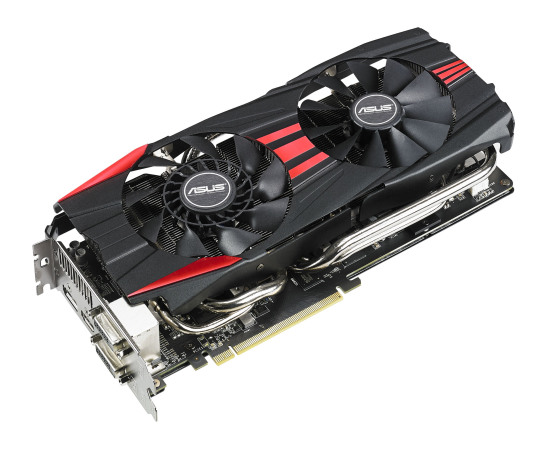The graphics card is the most important component of a Gamer PC, because it defines the visual quality with which you can enjoy games. And it turns even more interesting when we talk about the high end, the Formula 1 of the graphics technology.

One of the most powerful GPU’s of 2014 is the Radeon R9 290X by AMD. It’s about the maximum evolution of the GCN (Graphics Core Next) architecture, which is inherited from the prior graphics card generation (HD 7000). The GCN architecture, is by the way, also the one in charge of providing the graphics to the latest generation consoles: PlayStation 4 and Xbox One.
The R9 290X has 2816 stream processors, 176 texture units and 64 ROPs. It has a 512 bits memory bus to which a GDDR5 Ram is connected at 5GHz. This turns into a computing capacity of 5.6 TeraFLOPS and an astonishing 320 GB/s memory bandwidth.
To put this numbers into perspective, we can comment the capacities of the GeForce 780 Ti, the natural enemy of the R9 290X. The GeForce GPU has a computing potency of 5.05 TeraFlops and a bandwidth of 336 GB/s.
Asus Speeds Up
When launching a new GPU, AMD presents a complete card, with an effective cooling solution that all motherboard manufacturers can make use of. This is what is commonly known as a “reference design”.
Generally, the first graphic card models that come with a certain GPU respond to the reference design, but then, different manufacturers bring into play their engineering resources to offer different and improved versions.
One of the models that Asus offers is the R9 290X DirectCU II. More precisely, here we will be talking about the R9290X-DC20C-4GD5 model.
This card uses the R9 290X GPU, but slightly overclocked. While the standard version of AMD has a maximum frequency of 1000MHz, the one from Asus reaches 1050 MHz. On the memories side, there’s also overclock: the reference model has GDDR5 at 5GHz, while the one from Asus offers 4GB at 5.4GHz. This way, increasing the memory bandwidth up to 345GB/s.
Appearance
Much of the appearance of this R9 290X card is due to the use of the DirectCUII cooler, which the Asus firm also uses in other high-end models. This cooling system is based on heat pipes which carry the heat quickly towards a cooling block with aluminum sheets (fins). The air flows through the cooler thanks to two fans that provide a quiet operation, compared to the reference cooler which has a single fan.
Asus says that thanks to the DirectCU II cooler, their R9 290X works 20% cooler and is 3 times quieter than the reference card. We estimate that this values are approximate during full load, which is when the reference models get noisy.
A great detail for those Do-it-Yourself-Lovers: the heat sink comes with an entirely black protective case and in the box you can find two sets of decorative stickers. One of them is the classic red from Asus and the other one is yellow/golden. Thus, we can adapt the visual style of out VGA to the motherboard we have. Another option is, as we prefer, to leave the VGA completely black because it looks pretty good this way.
On the other hand, the card has a length of 28.7cm. It’s a large object and must be handled with care to adjust it inside the case.
Two PCI Express connectors are used for the electric connection: One with 6 pins and another one with 8 pins. Asus used an eight phase design in their digital voltage regulator, in order to minimize the electronic noise, improve the stability and increase the longevity of the product.
Energy Consumption
When it comes to high-end graphic cards, the electrical consumption matters a lot, not only for the monthly bill from the electric company, but because we will have to choose a high-end power supply that matches our graphic card.
For the reference R9 290X card, AMD states an average consumption of 250 Watts during game situation. And we are not talking about the maximum possible consumption which is achieved with applications such as Furmkak or with last generation games that take advantage of all the DX11 GPU’s possibilities. Therefore, and by the level of overclocking it comes with from factory, it’s not a surprise that Asus specifies their maximum consumption of 300 Watts for the 290X DC II.
Performance
Next, we will see some game tests to give us an idea of the level of performance of the graphics card. The processor used is a Core i7 4770K in its standard frequency (3.5 GHz).
- Bioshock Infinite: this game is configured in the Ultra Quality level, or in other words, everything to the maximum. The Asus card achieves 97.2 fps at 1920 X 1080 and 61.3 fps at 2560 X 1440. On the other hand, a reference R9 290X achieves 93.7 fps and 59.4 fps.
- Crysis 3: the Crysis series is still very hardware demanding for PC’s. The latest versions use DirectX 11 in an intensive way when it’s configured in a High Quality, with antialiasing MSAA 4x mode. With the Asus DC II, we achieved an average of 60.3 fps at 1920 X 1080, and achieved 39.6 at 2560 X 1440. The reference card achieves 57.8 fps and 38.4 respectively.
- GRID 2: we could not forget to include a racing game. Here we use the Ultra Quality preset and apply antialiasing MSAA 4x, with all the effects to the maximum. The Asus card will give us an average of 109.6 fps at 1920 X 1080 and 90.6 at 2560 X 1440. Meanwhile, the reference model from AMD is slightly below, with 106 fps and 79.5 fps.
Conclusions
The R9 290X GPU was created by AMD to enter into the 4k gaming era. And it’s that for the graphic cards at this level, the battlefield is no longer in the 1920×1080: the manufacturers seek to justify the purchase of these products with the use of high resolution screens. Or through the use of multiple monitors simultaneously.
In any case, the performance tests make it clear that the Asus R9 280X DirectCU II OC allows you to play any of the current games with the maximum details at 1080p. And of course, it still has the option to move towards higher resolutions.
Read More:
Gaming Laptops under 1500
Gaming Laptops under 1000






